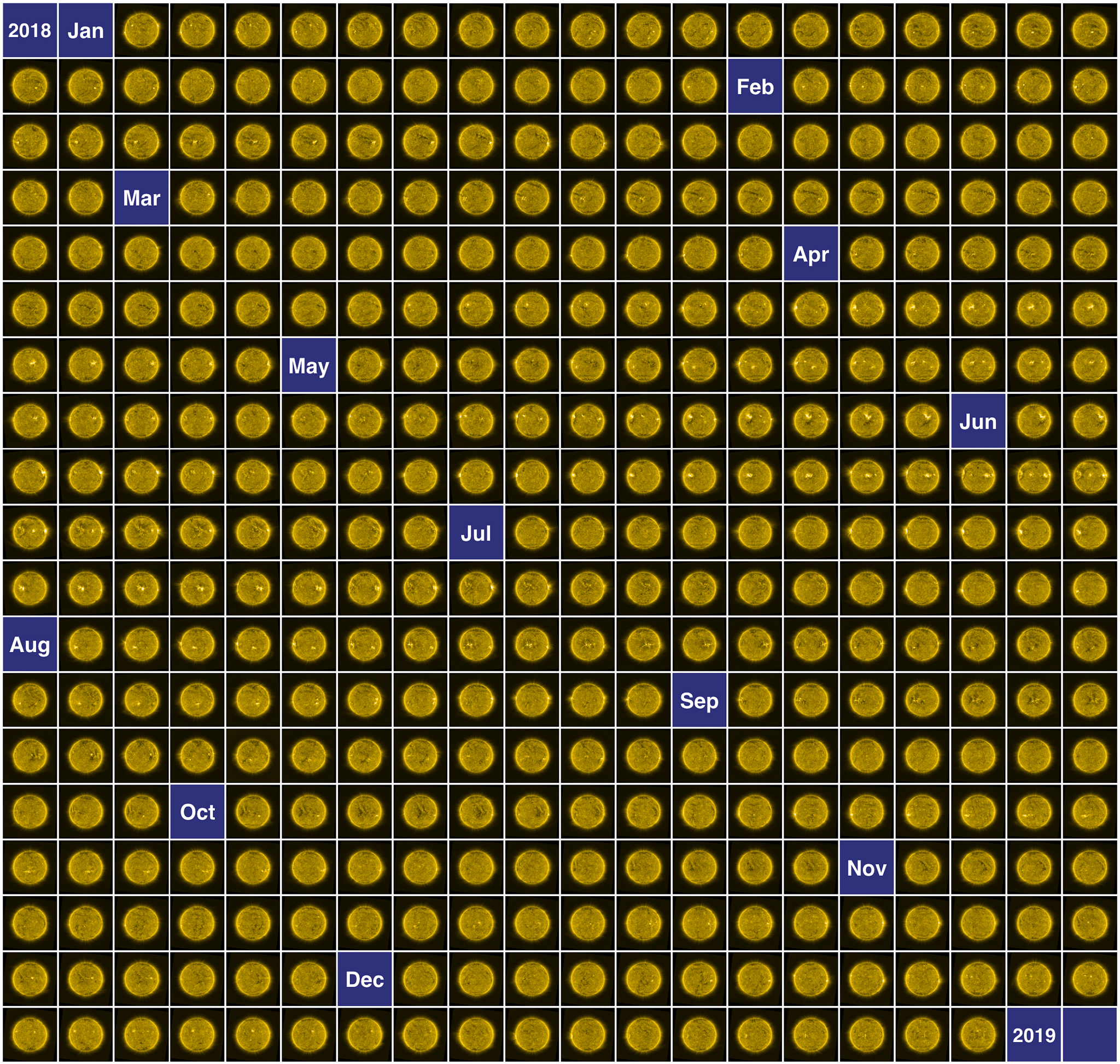365 Days of Sunshine: Time-Lapse Video Shows the Sun on Every Day of 2018
We may not see sunshine every day here on Earth, but the sun is always shining in space! A collection of 365 satellite images show how the face of the sun appeared every day in 2018, as seen through the eyes of the European Space Agency's (ESA) Proba-2 satellite. You can see all 365 images stitched together in a time-lapse video.
Proba-2 showed that the sun had a relatively uneventful year regarding sunspots and solar flares. As the sun spins, very few bright active regions and dark sunspots rotate into view. That's because there was a lull in its 11-year cycle of activity during 2018. Scientists predict that the sun's activity should start to pick up in 2019, with the next peak coming in 2024.
"One way to assess the level of activity is by counting sunspots (dark spots in the images), or recording the strength of solar flares," ESA officials said in a statement. "The most energetic flare of 2018 was recorded on 7 February, from a small region located at central latitudes in the eastern hemisphere of the sun." You can see the little flare in the third row of the collage on the left side of the sun. [Photos: Sunspots on Earth's Closest Star]
Orbiting 450 miles (725 kilometers) above the Earth, Proba-2 has kept a constant eye on the sun to monitor space weather since 2009. Proba-2 captured these 365 images using a camera called SWAP, which stands for "Sun Watcher using Active Pixel System detector and Image Processing." Proba-2 has also observed solar eclipses from its special vantage point in low Earth orbit.
Email Hanneke Weitering at hweitering@space.com or follow her @hannekescience. Follow us on Twitter @Spacedotcom and on Facebook. Original article on Space.com.
Breaking space news, the latest updates on rocket launches, skywatching events and more!

Hanneke Weitering is a multimedia journalist in the Pacific Northwest reporting on the future of aviation at FutureFlight.aero and Aviation International News and was previously the Editor for Spaceflight and Astronomy news here at Space.com. As an editor with over 10 years of experience in science journalism she has previously written for Scholastic Classroom Magazines, MedPage Today and The Joint Institute for Computational Sciences at Oak Ridge National Laboratory. After studying physics at the University of Tennessee in her hometown of Knoxville, she earned her graduate degree in Science, Health and Environmental Reporting (SHERP) from New York University. Hanneke joined the Space.com team in 2016 as a staff writer and producer, covering topics including spaceflight and astronomy. She currently lives in Seattle, home of the Space Needle, with her cat and two snakes. In her spare time, Hanneke enjoys exploring the Rocky Mountains, basking in nature and looking for dark skies to gaze at the cosmos.

